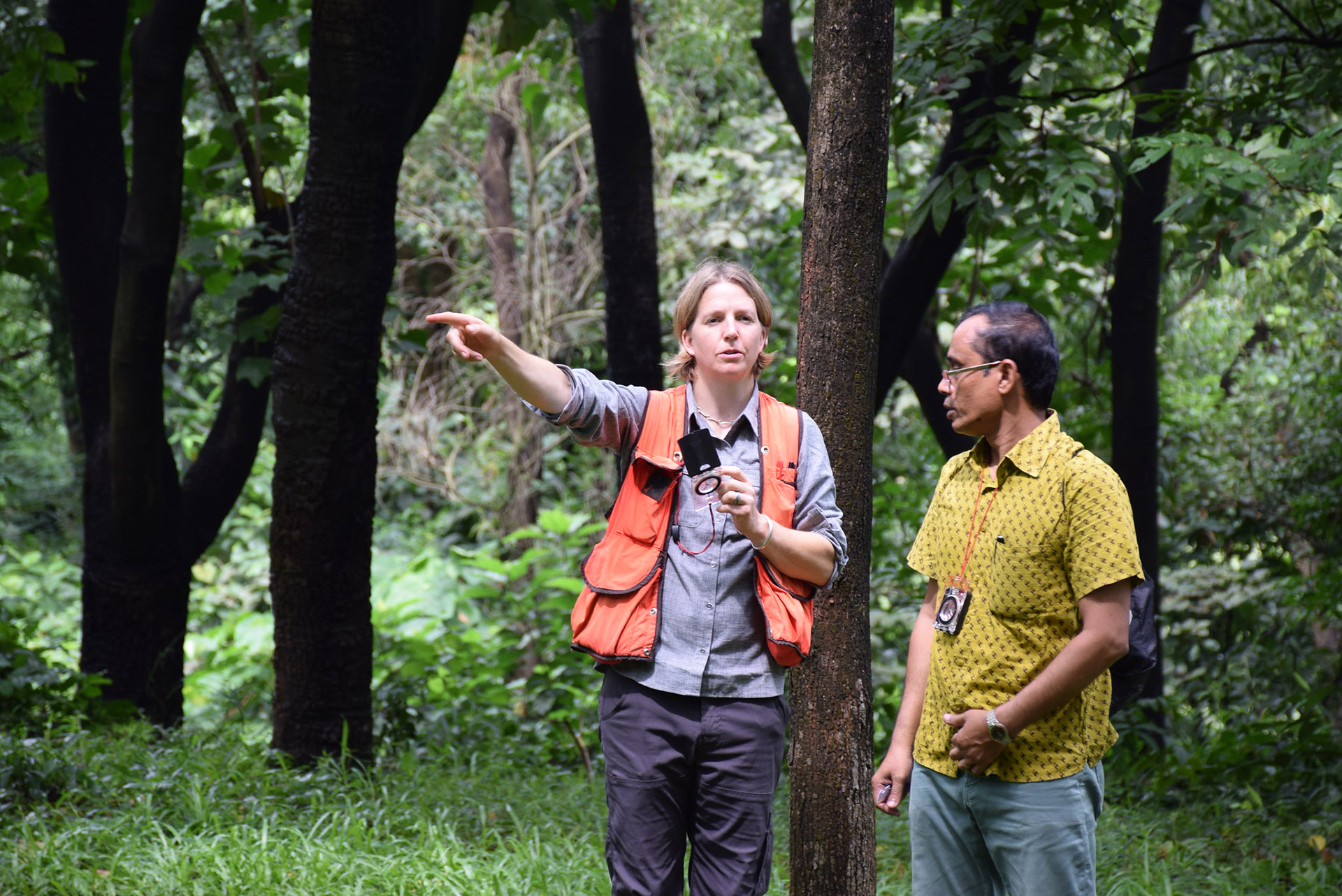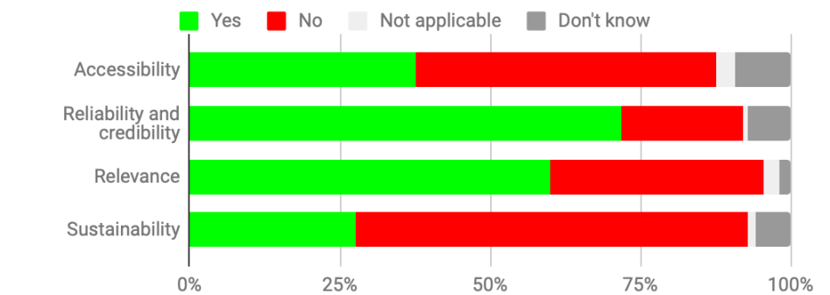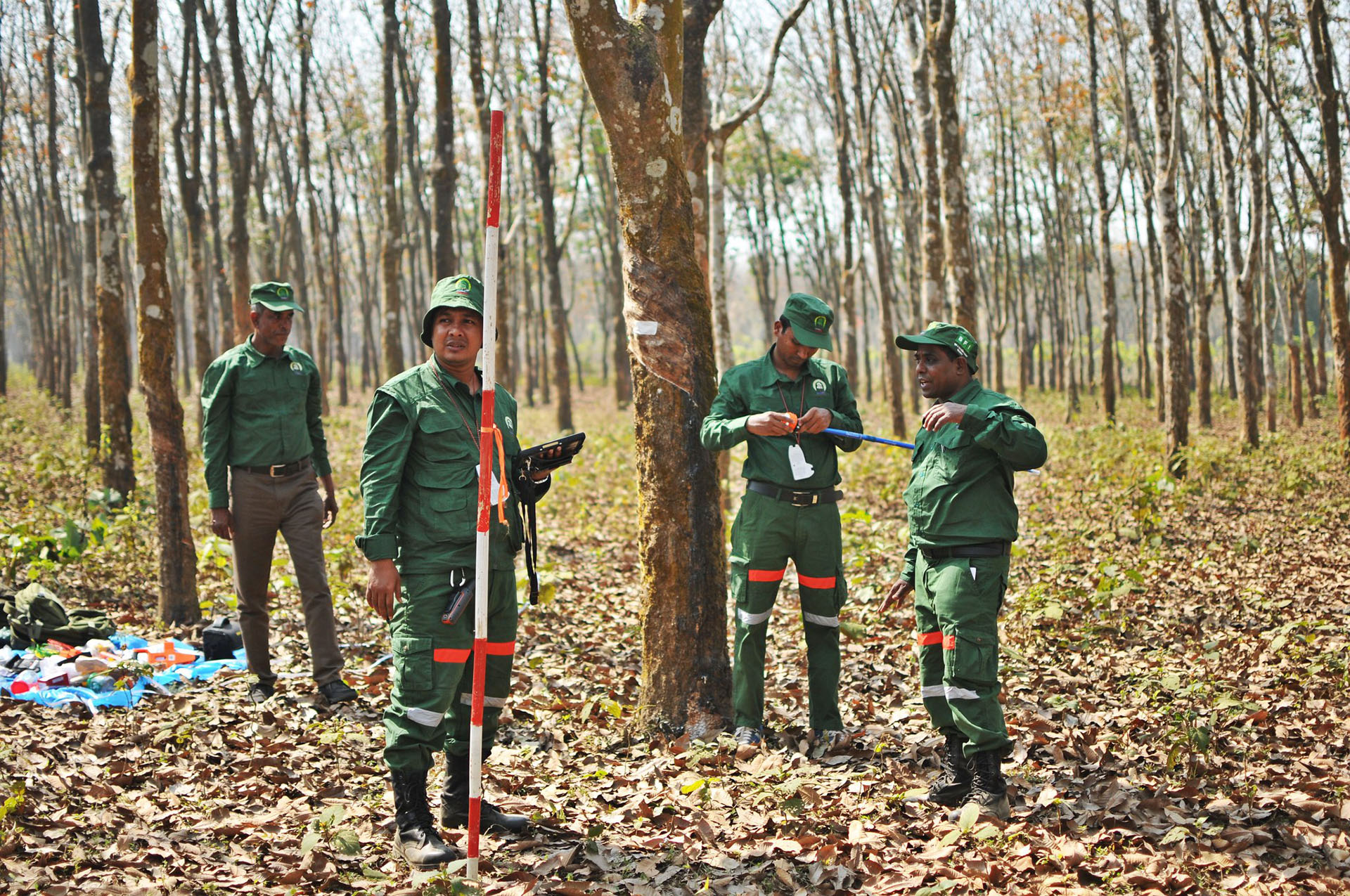It is often acknowledged that making decisions based on scientific evidence is good practice and that, therefore, providing decision-makers with reliable information is an important development strategy. This is also true in the forest sector, where forest monitoring has often had the explicit or implicit ambition to inform policy-making. At the country level, there are various examples of how links between forest monitoring and policy-making can be established.
Viet Nam, for example, experienced a shift in its forestry sector in the early 1990s as a result of policy efforts to accelerate the agricultural transition and expand a sustainable forest industry. With data providing hard evidence of this significant forest decline, the government took on ambitious forest-area targets and launched a new monitoring campaign to track progress. Vast tree planting activities were undertaken, and the government enacted several partial logging and export bans and used the results of a national forest inventory to tightly control logging.
Cameroon offers another example. The country took important steps to reform its forest concessions regime in the 1990s and 2000s. A fiscal crisis and the need to enhance government revenues triggered an effort to implement forest management and clamp down on corruption. Upgraded forest management planning required the collection of inventories, and independent forest monitoring became a basis for management oversight. Forest policy progress can be transparently evaluated based on independent forest monitoring results.
A renewed focus on opportunities afforded by improved forest monitoring systems is timely. Over the past decade, much capacity-development support has focused on forest monitoring systems for REDD+ and international reporting that could also be leveraged for policy-making. With the support of various initiatives, including the UN-REDD Programme, Forest Carbon Partnership Facility (FCPF), Central African Forest Initiative (CAFI) and others, national forest monitoring systems have been significantly strengthened, most notably with satellite land monitoring systems, national forest inventories and national greenhouse gas inventory systems. The resulting “better” data and analysis could provide an opportunity to promote science-based decision-making.

The current synergies between forest monitoring and policy-making are explored in FAO’s upcoming publication, “Better data, better decisions: Towards impactful forest monitoring” which presents the current use of forest monitoring data in policy-making in 38 countries. Among them are Argentina, Bangladesh, Brazil, Cambodia, Cameroon, Colombia, the Congo, Costa Rica, Côte d’Ivoire, the Democratic Republic of the Congo, Ecuador, Ethiopia, Ghana, Guatemala, Guyana, India, Indonesia, the Lao People’s Democratic Republic, Liberia, Madagascar, Malaysia, Mexico, Mongolia, Mozambique, Myanmar, Nepal, Nigeria, Panama, Paraguay, Papua New Guinea, Peru, Solomon Islands, Sri Lanka, Suriname, Uganda, the United Republic of Tanzania, Viet Nam and Zambia.
The assessment shows that in many countries, forest monitoring systems are already an important ingredient in policy-making. In some countries, policy instruments directly draw on forest monitoring. The majority of countries use forest monitoring systems to evaluate public policy.
Some forest monitoring systems are more suitable for informing policy-making than others. The below chart aggregates answers to a set of 20 indicators concerning the suitability of the countries’ national forest monitoring for policy-making. A series of questions revealed that countries have invested more in the reliability and credibility, and rather less in the relevance and accessibility of forest monitoring data. Furthermore, in most countries, the sustainability of forest monitoring systems is at risk.

With more countries adopting forest monitoring systems, there is an opportunity – and a need – for further investment to bridge the gaps between the data collected and the data used for policy-making. Refining forest monitoring systems and making them more suitable to inform policy-making may strengthen the potential impact for this data.
An important caveat also emerges, however. There is no easy recipe whereby well-structured forest monitoring data and systems would directly, and predictably, create policy change. Although some countries offer success stories for linking forest monitoring to policy-making, in other cases, data and monitoring systems score low in terms of accessibility and sustainability, and still become an important basis for policy-making.
The country assessments provide a strategic basis for capacity development in forest monitoring. Accessible forest monitoring can be relevant to policy-making, and relevant forest monitoring will garner the necessary government ownership to become sustainable. Only reliable and credible forest monitoring data and analysis are taken up in policy-making and thus become sustainable. Such interlinkages suggest that policy uptake may not only be the objective of much forest monitoring capacity development, but also the enabler of systems that are sustainable.
However, those interested in better forest policy-making cannot rely on monitoring systems alone, regardless of what indicators guide their design. Finding strategic opportunities might encourage donors to allocate support to forest monitoring capacity development.
The approach to knowledge sharing and capacity development for forest monitoring has to be considered carefully. It should focus squarely on the needs of stakeholders and build upon an evaluation of past impacts. Often, this may entail balancing efforts for technical sophistication of datasets with practical requirements. Where windows of opportunity occur, targeted investment in forest monitoring will unlock better policy-making and ultimately result in more sustainable forest management.

